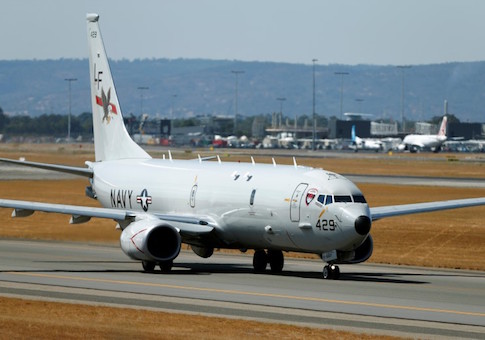By Sanjeev Miglani and Greg Torode
NEW DELHI/HONG KONG (Reuters) - India and the United States are in talks to help each other track submarines in the Indian Ocean, military officials say, a move that could further tighten defense ties between New Delhi and Washington as China steps up its undersea activities.
Both the United States and India are growing concerned at the reach and ambition of the Chinese navy, which is taking an increasingly assertive stance in the South China Sea and is challenging India's domination in the Indian Ocean.
New Delhi, shedding its decades-old reluctance to be drawn into America's embrace, agreed last month to open up its military bases to the United States in exchange for access to weapons technology to help it narrow the gap with China.
The two sides also said their navies will hold talks on anti submarine warfare (ASW), an area of sensitive military technology and closely held tactics that only allies share.
"These types of basic engagements will be the building blocks for an enduring Navy-to-Navy relationship that we hope will grow over time into a shared ASW capability," one U.S. official familiar with India-U.S. military cooperation said, speaking on condition of anonymity.
Indian naval officials say Chinese submarines have been sighted on an average four times every three months. Some are seen near India's Andamans and Nicobar islands that lie near the Malacca Straits, the entry to the South China Sea through which more than 80 percent of China's fuel supplies pass.
India and the United States, which already conduct joint naval exercises, both fly the new version of the P-8 aircraft, making information sharing easier on highly sensitive submarine tracking activities.
The P-8 is Washington's most advanced submarine hunting weapon, equipped with sensors that can track and identify submarines by sonar and other means.
An Indian naval spokesman declined to comment on the proposed anti-submarine warfare cooperation with the United States.
But an Indian naval source, briefed on the discussions, said the focus of the next set of joint exercises to take place in the northern Philippine Sea in June will be on anti-submarine warfare.
Japan, a close U.S. ally whose submarines are believed to track Chinese submarines in the western Pacific, will also be a participant in the exercises.
INTENSE SURVEILLANCE
Two linked factors are driving the co-operation, say regional military attaches and security experts.
The prospect of active patrols by nuclear-armed Chinese submarines has sparked intense surveillance activity around the China's southern submarine base on Hainan Island, and nearby waters.
India, meanwhile, is preparing to launch its first locally-built submarine armed with nuclear tipped missiles.
So just as U.S. attack submarines are seeking to track the Chinese nuclear armed submarines in the Pacific, the Chinese are expected to send their own attack submarines to the Indian Ocean in greater numbers to scrutinize the Indian patrols.
Collin Koh, a submarine expert at Singapore’s S. Rajaratnam School of International Studies, said increased U.S. submarine and surveillance activity was being seen across the region.
"We will see the Indian Ocean grow in importance, too, particularly around traditional chokeholds, such as the approaches to the Malacca Straits and the Nicobar islands, so an improved U.S. relationship with the major submarine player in the area, India, is very significant," Koh said.
BOLSTERING INDIAN CAPABILITIES
Initially, the United States as the world leader in anti-submarine warfare is likely to be bolstering Indian capabilities in the field.
But in time, experts say each country could be covering stretches of the Indian Ocean through which two-thirds of the world's trade moves.
David Brewster, an expert on the strategic rivalry in Indian Ocean at the Australian National University, said anti submarine warfare collaboration may eventually include Australia, another U.S. ally which just ordered 12 new submarines.
"We are likely to ultimately see a division of responsibilities in the Indian Ocean between those three countries, and with the potential to also share facilities."
China for its part is seeking to secure its energy and trade transportation links by building ports and other infrastructure for countries such as Sri Lanka that lie along the vital shipping route.
Asked about collaboration between India and the United States on submarine warfare, Hua Chunying, a spokeswoman for China’s Foreign Ministry, said China had noted countries in the region engaging in military cooperation.
"We hope that the relevant cooperation is normal, and that it can be meaningful to the peace and stability of the region," she said.
(Additional reporting by David Brunnstrom in WASHINGTON and Megha Rajagopalan in BEIJING; Editing by Lincoln Feast)
